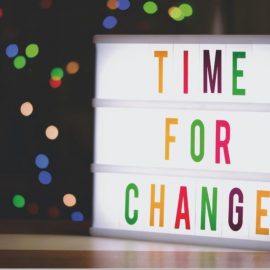
This is a free excerpt from one of Shortform’s Articles. We give you all the important information you need to know about current events and more.
Don't miss out on the whole story. Sign up for a free trial here .
Will the 2024 housing market be as bad as the 2023 market? How did the 2007-2008 financial crisis trigger today’s affordable housing struggles? Why is homeownership a pipedream for many Americans?
Stricter lending standards and sky-high home prices have rendered homeownership increasingly unattainable for many Americans. Despite slight improvements expected in 2024, long-term housing affordability remains uncertain due to supply shortages, high prices, and increasing economic inequality.
Keep reading for an idea of what’s in store for the year ahead.
The Housing Affordability Crisis
Homeownership, a longstanding emblem of stability and prosperity in the US, is becoming a distant reality for many Americans now shut out by the escalating affordable housing crisis.
Here are economists’ predictions for the 2024 housing market.
Background
The roots of today’s affordable housing slump trace back to the 2007-2008 financial meltdown, which led the housing market to crash. The upheaval resulted in stricter lending rules that made it harder for people to qualify for mortgages and triggered a sharp drop in new home construction.
Homeownership has historically been considered a cornerstone of the American Dream, giving families a chance to build wealth and stability over time. But the rate of homeownership has been dropping.
The Current Affordability Crisis
In recent years, sky-high home prices, rising mortgage rates, and a shortage of homes for sale have put home buying out of reach for many Americans.
- Home prices have surged by 46% since early 2020, putting the median home sale price at $387,600.
- The average 30-year fixed mortgage rate climbed to a 21-year high of 7.09%.
- Rents have risen sharply in recent years, peaking at a nationwide average median of $2,054 in August 2022.
Experts say that, as a result, the American dream of homeownership is fading for a growing number of Americans. Half of all renters are buckling under financial pressure, spending more than 30% of their income on housing.
The crisis highlights the growing divide between individuals fortunate enough to jump on the property ladder early and those who may have family backing.
Outlook for 2024
The outlook for the affordable housing crisis in 2024 hinges largely on what happens with mortgage rates, home prices, and inventory levels. Most experts predict that mortgage rates will continue to decline from their 2022 peaks, with estimates for an average 30-year fixed rate running between 6.5% and 7.1%.
Economists say this could improve housing affordability by 5%, assuming incomes continue to rise at recent rates and home prices increase moderately, as expected. However, even this would only improve the situation marginally.
Further, economists largely agree that low housing inventory will continue to plague the market this year:
- With mortgage rates expected to remain above 6%, homeowners enjoying current sub-4% rates may be reluctant to sell their homes.
- A shortage of roughly 1 million homes remains.
- Single-family housing construction will do little to alleviate the pressure—forecasted to inch up by just 0.4%.
- Home prices are expected to rise by 3-4%, outpacing wage growth.
Looking Ahead
Experts say that significant, long-term improvements in the housing crisis depend largely on cooling interest rates and meaningful government policy changes. If marginal interest rate declines from 2023 continue into 2024, as the Federal Reserve anticipates, market activity may increase.
However, to date, government policy efforts have shown limited effectiveness in moving the needle on housing affordability and supply.

Want to fast-track your learning? With Shortform, you’ll gain insights you won't find anywhere else .
Here's what you’ll get when you sign up for Shortform :
- Complicated ideas explained in simple and concise ways
- Smart analysis that connects what you’re reading to other key concepts
- Writing with zero fluff because we know how important your time is






